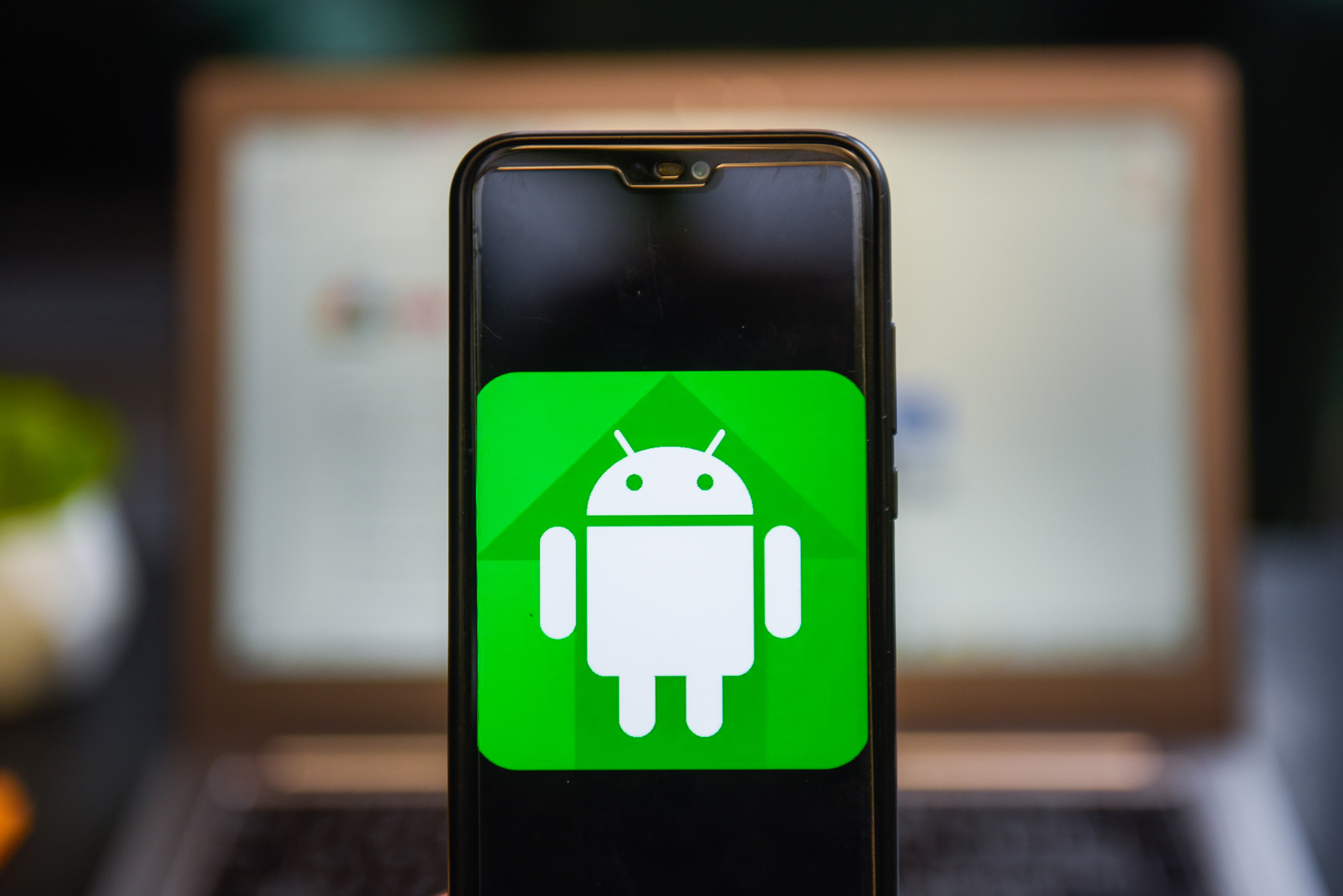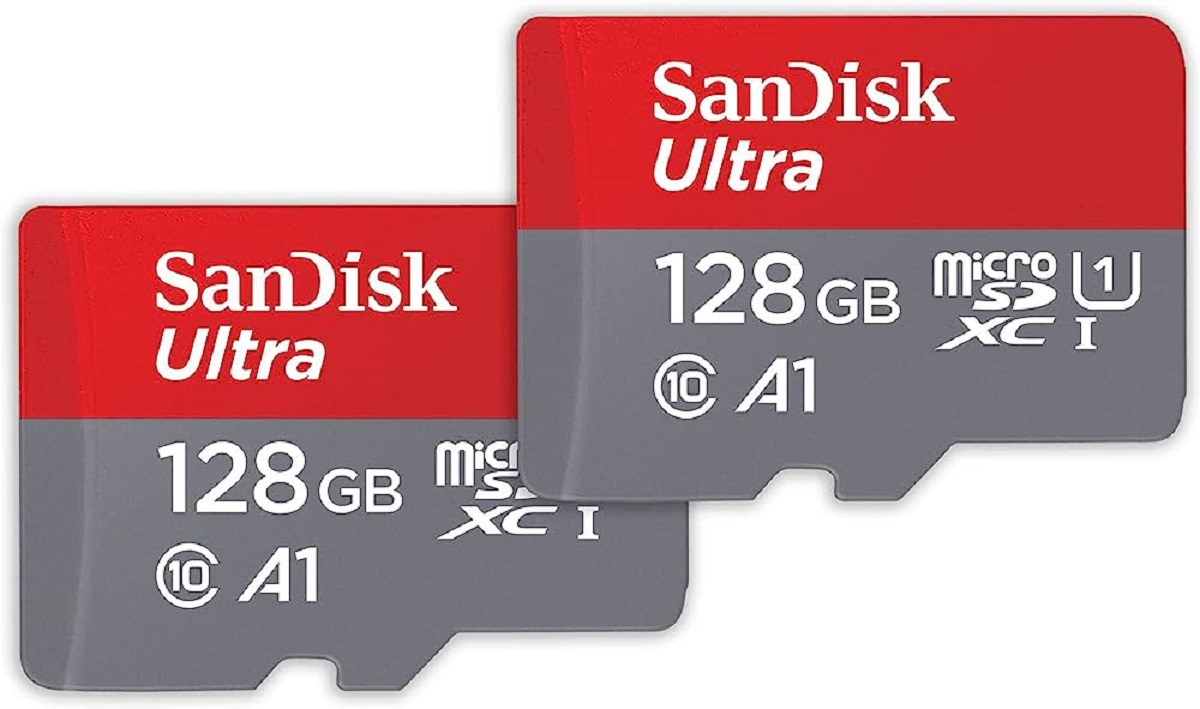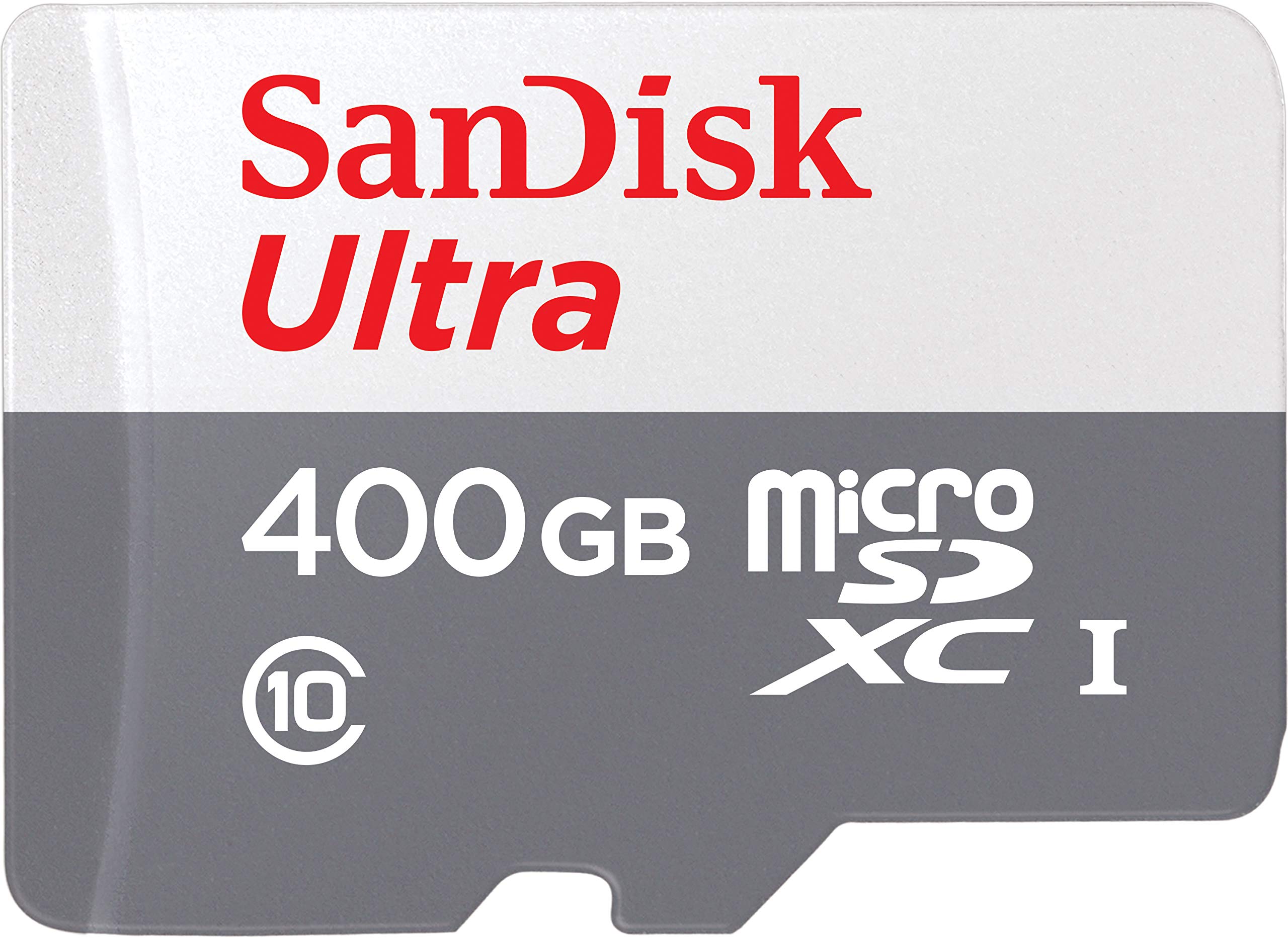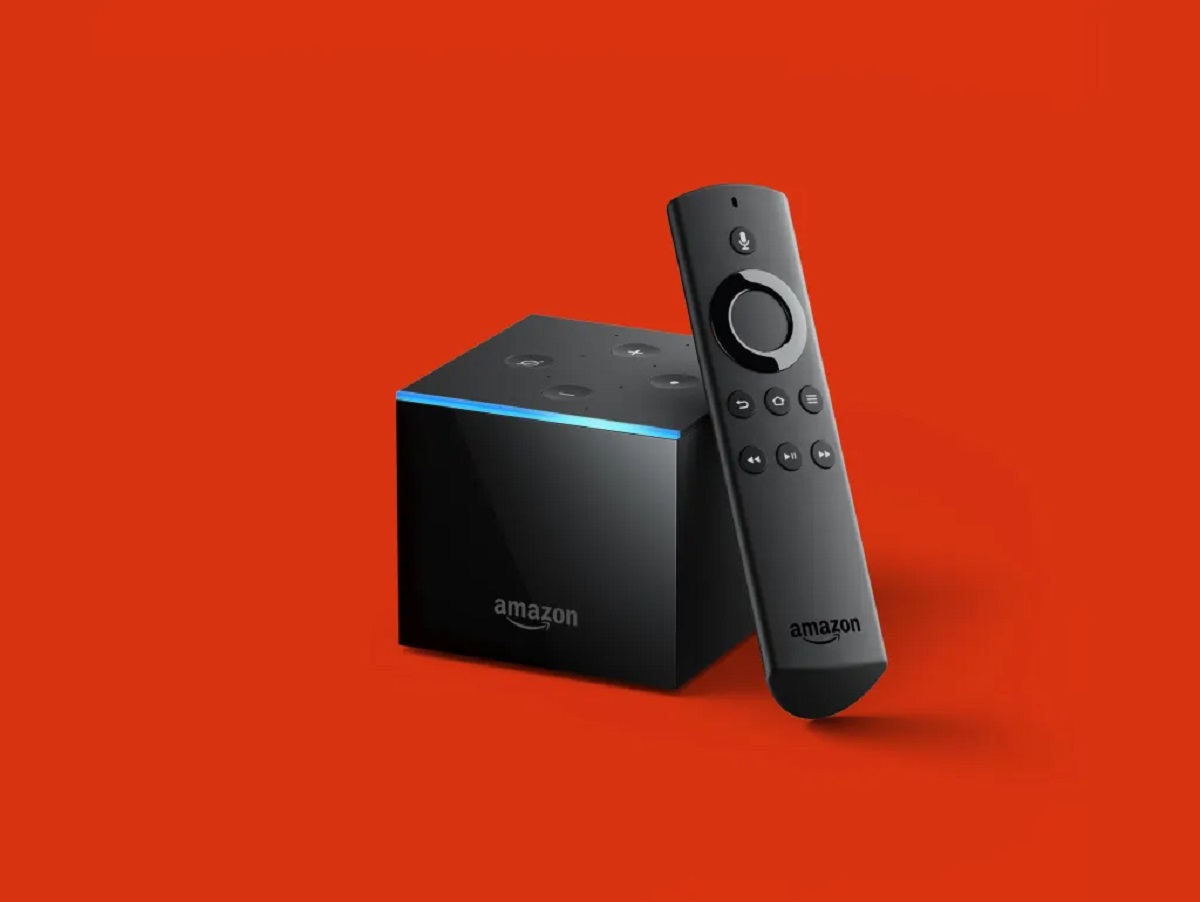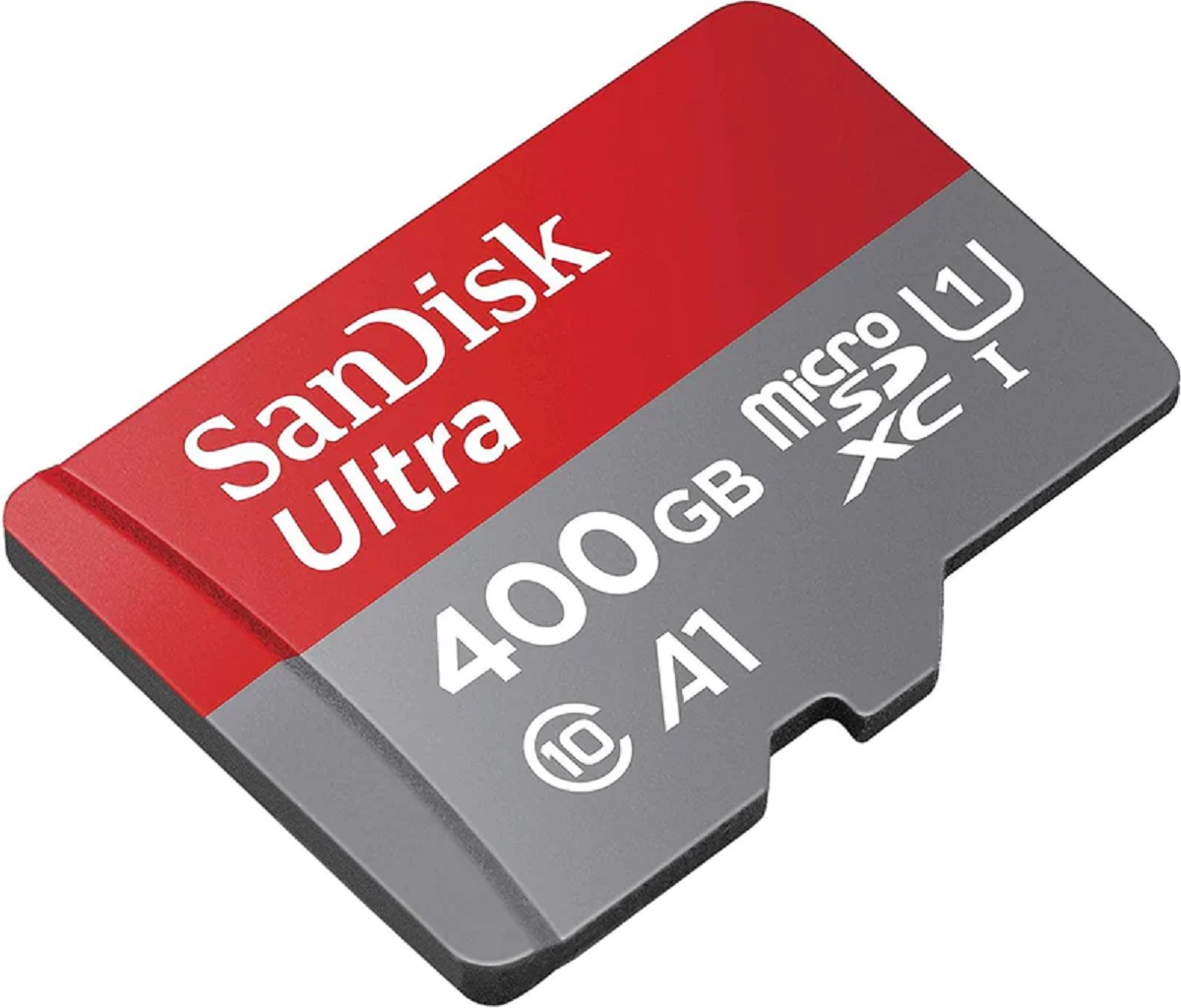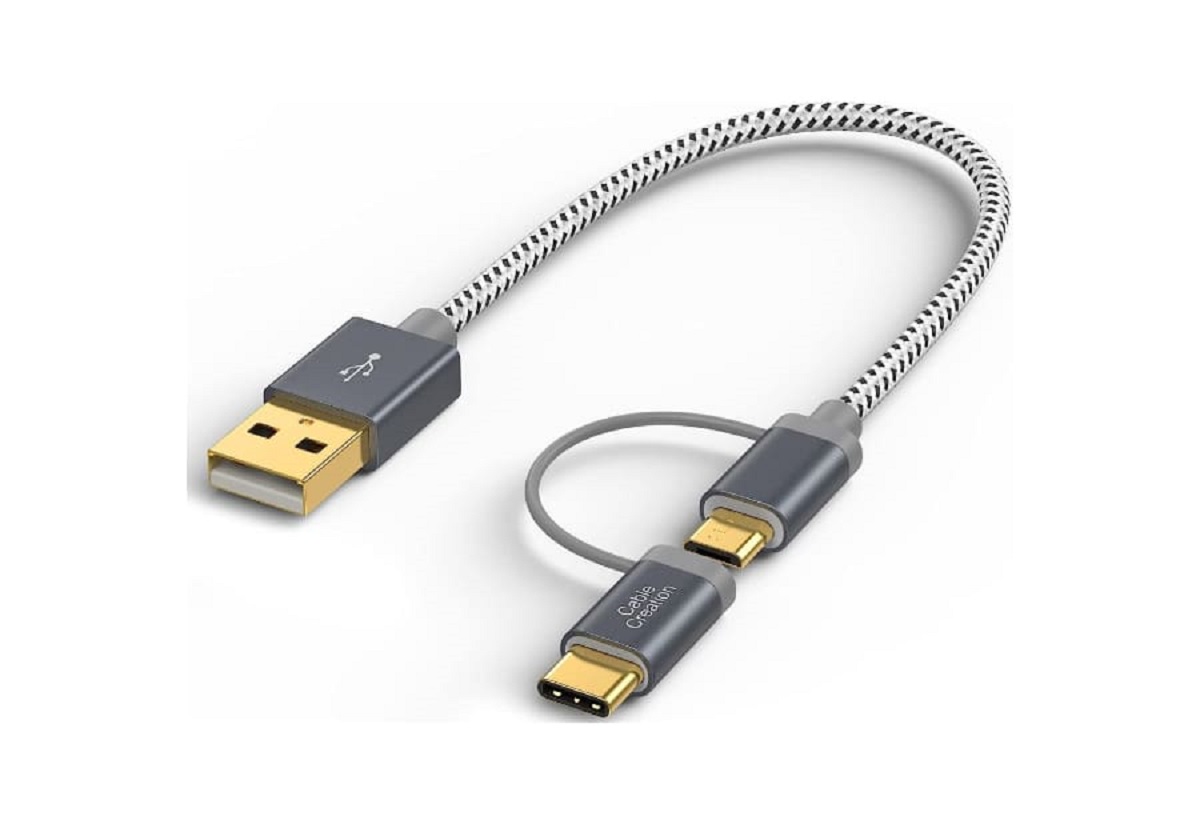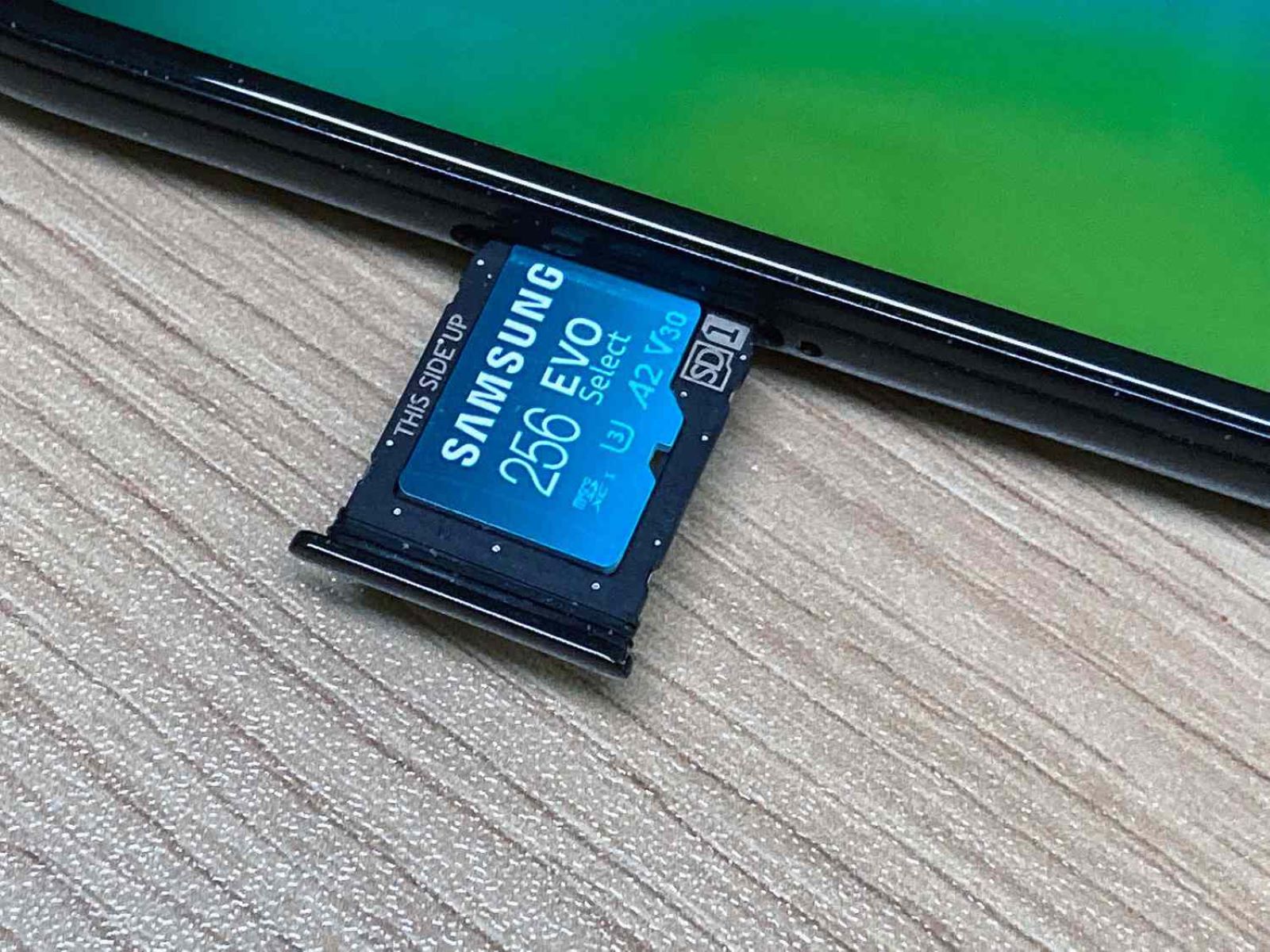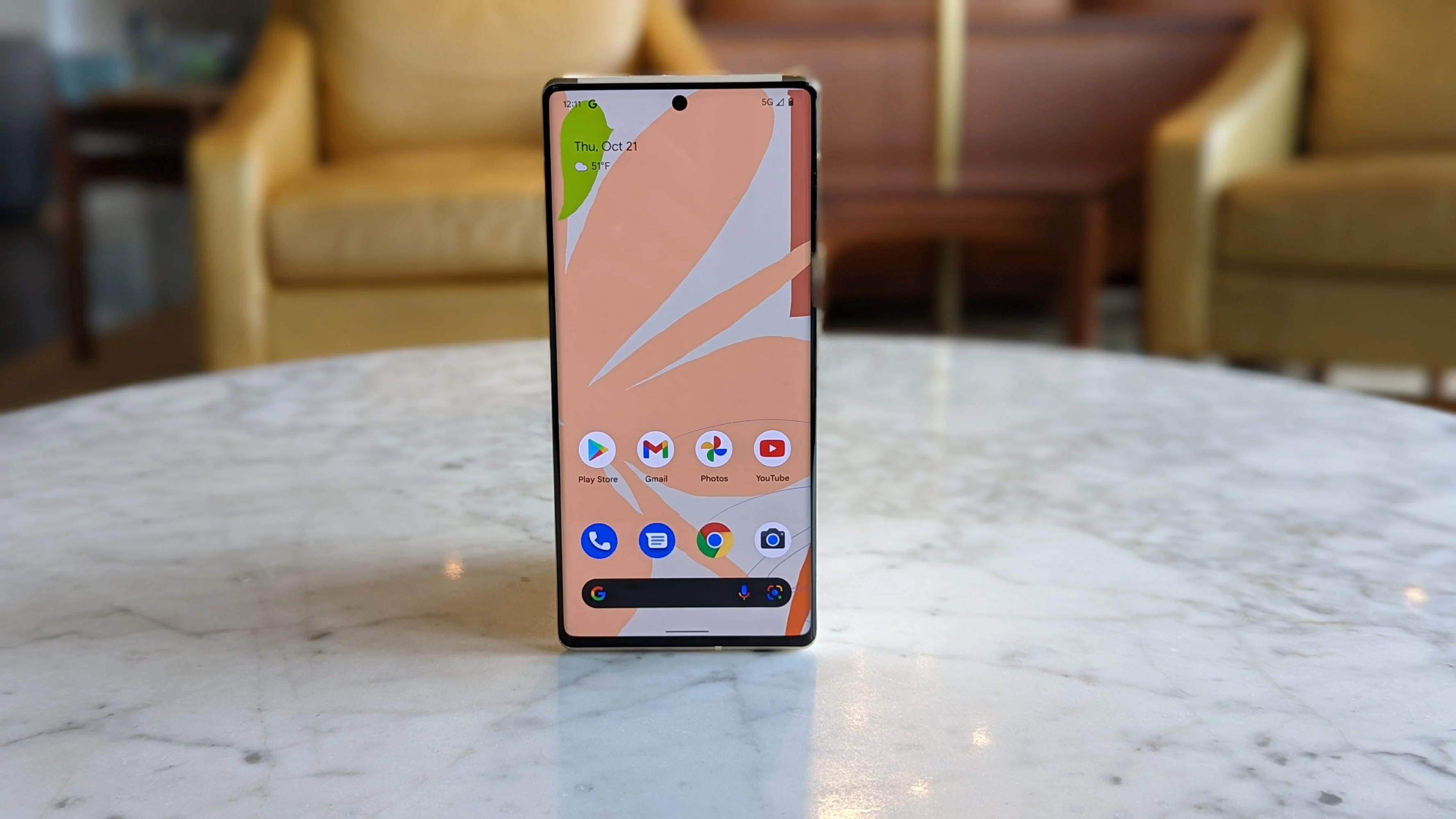Introduction
Smartphones have become an integral part of our lives, helping us stay connected, productive, and entertained. However, as time goes on, you may notice that your once-speedy Android smartphone starts to slow down. This can be frustrating, especially when you’re trying to accomplish tasks quickly or enjoy a seamless user experience. The good news is, there are several effective methods to speed up your Android smartphone and restore its performance to its former glory.
In this article, we will explore various techniques and tips to optimize your Android device’s performance. From removing unnecessary apps to tweaking settings, these strategies will help you make the most of your smartphone’s capabilities. Whether you own a budget-friendly or flagship Android device, these tips can be easily implemented to give your smartphone a much-needed boost.
It’s important to note that before trying any of these methods, it’s always a good idea to backup your important data. While these techniques are generally safe, it’s better to be safe than sorry. Now, without further ado, let’s dive into the various ways you can speed up your Android smartphone and enhance your overall user experience.
Remove Unnecessary Apps
One of the main reasons for a sluggish Android device is having too many unnecessary apps installed. Over time, we tend to accumulate a multitude of apps, many of which we rarely use or have forgotten about. These apps not only take up valuable storage space but can also consume system resources in the background, resulting in slower overall performance.
To speed up your Android smartphone, take some time to review the apps installed on your device. Identify the ones that you no longer need or use regularly. Uninstalling these apps will not only free up storage space but also reduce the strain on your device’s processor and memory.
To uninstall an app, go to your device’s Settings and navigate to the Apps or Application Manager section. Here, you’ll find a list of all the installed apps on your device. Select the app you want to remove and tap on the uninstall button. Some pre-installed system apps may not have the uninstall option, but you can usually disable them to prevent them from running in the background.
Remember, be cautious when uninstalling or disabling apps, especially those related to critical system functions or installed by the device manufacturer. Removing essential apps can lead to functionality issues or even cause your device to become unstable. If you’re unsure about an app’s importance, it’s best to do a quick search online or consult with an expert before taking any action.
By decluttering your Android device and removing unnecessary apps, you’ll not only improve performance but also create a more streamlined and organized user experience. It’s like giving your smartphone a fresh start and optimizing it for your specific needs.
Clear Cache
As you use your Android smartphone, various apps and processes generate cache files to help speed up certain operations. However, over time, these cache files can accumulate and take up a significant amount of storage space, potentially slowing down your device. Clearing the cache regularly is an effective way to free up space and improve overall performance.
To clear the cache on your Android smartphone, go to the Settings menu and navigate to the Storage or Storage and Memory section. Here, you’ll see a breakdown of the storage usage on your device. Look for the option to clear cache and tap on it. You can choose to clear the cache for individual apps or clear the cache for all apps at once.
Keep in mind that clearing the cache will not delete any personal data or app settings. It’s simply removing temporary files that are no longer needed. After clearing the cache, you may notice that some apps take a bit longer to load the first time you use them, as the cache needs to be regenerated. However, subsequent launches should be faster and more responsive.
In addition to using the built-in cache clearing feature in your device settings, you can also consider using third-party cache cleaning apps from the Google Play Store. These apps offer more advanced cache cleaning options and can help you remove additional unnecessary files that may be taking up space on your device.
By regularly clearing the cache on your Android smartphone, you ensure that your device runs smoothly and efficiently. It’s like tidying up your smartphone’s storage space and optimizing it for better performance.
Use Lighter Apps
Many popular apps these days come with feature-rich capabilities and flashy animations, but they can also consume a significant amount of system resources. If you’re looking to speed up your Android smartphone, consider replacing resource-intensive apps with lighter alternatives.
Lighter apps are designed to offer similar functionality to their full-featured counterparts but with a smaller footprint in terms of storage and resource usage. These apps are often optimized to run smoothly on lower-end devices or in situations where internet connectivity is limited. They have a smaller installation size, use fewer system resources, and load faster compared to their heavier counterparts.
For example, instead of using the full Facebook app, you can use Facebook Lite, which offers a more streamlined experience with essential features while using significantly less data and resources. Similarly, instead of using resource-intensive video streaming apps, you can opt for lightweight alternatives like YouTube Go or Netflix Lite.
To find lighter versions of popular apps, you can search for them directly on the Google Play Store. Look for apps with the “Lite” or “Go” label, as they are specifically designed for a lightweight user experience. These apps may have slightly fewer features or a different interface, but they can significantly improve the performance of your Android device.
By using lighter apps, you not only free up valuable storage space but also reduce the strain on your device’s processor and memory. This results in a smoother and faster user experience, especially if you’re using an older or budget Android device.
Limit Background Processes
Background processes and tasks running on your Android smartphone can significantly impact its performance. These processes, such as app syncing, automatic updates, and system maintenance, consume system resources and can slow down your device. By limiting background processes, you can free up valuable resources and improve the overall speed and responsiveness of your Android smartphone.
To limit background processes, you can start by reviewing the settings of individual apps on your device. Some apps have options to control background activities, such as auto-syncing, push notifications, and background data usage. Disable or reduce these settings for apps that you don’t need to constantly stay updated or receive notifications from.
Additionally, you can also prevent certain apps from running in the background altogether. Go to the Settings menu, navigate to the Apps or Application Manager section, and select the app you want to modify. Look for the option related to background activities or running in the background and disable it.
It’s important to note that not all apps should be restricted from running in the background, as some may require continuous access to provide essential functionality. Exercise caution when limiting background processes to avoid breaking app functionality or preventing important notifications from reaching you.
By selectively limiting background processes, you can ensure that your Android smartphone allocates resources efficiently and prioritizes the tasks and apps that matter most to you. This will significantly enhance the performance and responsiveness of your device, allowing you to navigate and use your smartphone with ease and speed.
Disable Animations
Animations add a visual flair to the user interface of your Android smartphone. While they can make the device feel more interactive and dynamic, they can also contribute to a slower overall performance. By disabling or reducing animations, you can optimize your device’s speed and responsiveness.
To disable or reduce animations on your Android smartphone, you need to access the Developer Settings. First, go to the Settings menu, then scroll down to the About Phone section. Locate the Build Number and tap on it repeatedly until you see a notification that Developer Mode has been enabled. Once enabled, go back to the main Settings menu and find the Developer Options.
In the Developer Options, you’ll find various settings related to the performance of your device. Look for the Window Animation Scale, Transition Animation Scale, and Animator Duration Scale options. By default, these settings are set to 1x, indicating that animations run at normal speed. You can reduce these values to 0.5x or even turn them off completely.
Disabling animations will make transitions and app opening/closing feel snappier and more instantaneous. However, keep in mind that some visual effects may be sacrificed in the process. If you prefer having smoother transitions, you can experiment with reducing the animation scale values rather than disabling them entirely.
By disabling or reducing animations, you allow your Android smartphone to allocate resources more efficiently. This can lead to faster app loading times, quicker navigation, and an overall improved user experience. It’s a simple yet effective way to optimize the speed and performance of your device.
Keep Software Updated
Keeping your Android device’s software up to date is crucial for maintaining optimal performance and security. Software updates often include bug fixes, performance enhancements, and new features that can help improve the speed and stability of your device.
To check for software updates on your Android smartphone, go to the Settings menu and look for the System Updates or Software Update option. Tap on it to search for available updates. If there are updates available, follow the on-screen instructions to download and install them.
It’s important to regularly check for updates and install them as soon as they become available. Delaying updates can leave your device vulnerable to security risks and may miss out on critical performance improvements. Additionally, updated versions of apps and services often require the latest software versions to run optimally, so staying up to date ensures compatibility with the latest features and optimizations.
In some cases, software updates may also bring optimizations specifically designed to improve the speed and efficiency of your device. This could include better resource management, enhanced memory usage, and overall system performance enhancements. By keeping your software updated, you can take advantage of these improvements and ensure that your Android smartphone runs smoothly and optimally.
It’s worth noting that while software updates are generally beneficial, they can sometimes introduce new issues or compatibility problems. If you encounter any issues after updating, it’s advisable to check for any available patches or contact the device manufacturer’s support for assistance.
By regularly updating your Android device’s software, you not only ensure the best performance and security but also take advantage of the latest features and optimizations. This simple but important step can greatly contribute to a faster and more reliable user experience on your smartphone.
Use a Faster Launcher
The launcher is the interface that controls your Android smartphone’s home screen and app drawer. While the default launcher provided by the device manufacturer is functional, it may not always offer the fastest and most efficient performance. By using a faster and lightweight launcher, you can significantly enhance the speed and responsiveness of your device’s user interface.
There are several third-party launchers available on the Google Play Store that are designed to optimize performance and provide a smoother user experience. These launchers are often lighter in terms of resource usage and come with features that allow for greater customization and control over the home screen and app drawer.
Popular faster launchers include Nova Launcher, Microsoft Launcher, and Action Launcher, among others. These launchers offer features such as gesture controls, customizable app icons, and various themes to personalize your Android device’s appearance. Additionally, they have optimizations built-in to improve overall performance and reduce lag.
To install and use a new launcher, simply search for the desired launcher in the Google Play Store, download and install it, and then follow the on-screen instructions to set it as your default launcher. You can explore the settings of the launcher to further customize your home screen and tweak performance-related options.
Using a faster launcher not only provides a smoother and more responsive user interface but also allows for greater control over the appearance and functionality of your Android smartphone. It’s a simple yet effective way to optimize your device’s performance and improve your overall user experience.
Use a Faster Browser
The browser is one of the most frequently used apps on any smartphone, and the speed and efficiency of the browser can greatly impact your overall browsing experience. If you’re looking to speed up your Android smartphone, consider using a faster browser that is optimized for performance.
Several browsers are known for their speed and efficient resource usage. One popular option is Google Chrome, which offers a seamless browsing experience and is widely compatible with various websites and web applications. Another option is Mozilla Firefox, which focuses on privacy and security while still providing excellent performance.
Alternatively, you can explore lightweight browser alternatives designed specifically for faster performance on Android devices. Examples include UC Browser, Opera Mini, and Brave Browser. These browsers are designed to use less data, load pages quickly, and provide a smooth and seamless browsing experience even on slower internet connections.
When choosing a faster browser, it’s important to consider factors such as website compatibility, security features, and personal preferences. Each browser has its pros and cons, so it’s worth trying out a few options to see which one works best for you.
In addition to using a faster browser, optimizing your browsing habits can also improve performance. Avoid opening too many tabs simultaneously, clear your browsing history and cache regularly, and disable unnecessary browser extensions and plugins. These practices can help reduce the strain on your device’s processor and memory, resulting in a faster and smoother browsing experience.
Using a faster browser on your Android smartphone allows you to efficiently browse the web, load webpages quickly, and enjoy a seamless browsing experience. It’s a simple yet effective step to optimize your device’s overall performance and enhance your online activities.
Clear Storage Space
Over time, your Android smartphone’s storage space can become cluttered with various files and apps, which can impact its overall performance. Clearing storage space is essential to optimize your device’s speed and ensure smooth functionality. By removing unnecessary files and apps, you can free up space and create a more efficient and responsive device.
To clear storage space on your Android device, start by reviewing and deleting unnecessary files. Go to the Files or File Manager app on your device and navigate through the different folders to identify files that you no longer need. These files can include old documents, photos, videos, and audio recordings. Delete them to free up valuable space.
Additionally, it’s a good idea to uninstall unused apps. Similar to removing unnecessary files, uninstalling apps that you no longer use can significantly improve your device’s performance. To do this, go to the Settings menu, navigate to the Apps or Application Manager section, and select the app you want to remove. Tap on the uninstall button to remove it from your device.
In addition to manual cleanup, you can also rely on the built-in storage management tools provided by your device. These tools help you identify large files, unused apps, and files that can be safely deleted. Take advantage of these tools to automate the storage clearing process and save time.
While clearing storage space is essential, make sure to back up any important files and data before deleting them permanently. This ensures that you don’t accidentally delete something valuable or irretrievable.
By regularly clearing storage space on your Android smartphone, you can create a more efficient and responsive device. It allows your device to have more breathing room, leading to faster app loading times, smoother multitasking, and an overall improved user experience.
Restart Your Phone Regularly
Restarting your Android phone regularly is a simple yet effective way to optimize its performance and resolve minor issues. Over time, your device may accumulate temporary files and processes that can slow down its performance or cause it to become unresponsive. By restarting your phone, you essentially give it a fresh start, allowing it to clear out these temporary files and refresh its system.
Restarting your phone helps in several ways. Firstly, it clears the device’s RAM, which can become overloaded with unnecessary processes and background apps. By doing so, you provide a clean slate for your device to allocate resources more efficiently, resulting in improved speed and responsiveness.
Secondly, a restart can help resolve software glitches or minor bugs that may be affecting your device’s performance. Sometimes, certain processes or apps may crash or become unresponsive, leading to a slowdown in overall performance. Restarting your phone can often fix these issues and restore your device to its normal operating speed.
Regularly restarting your phone, such as once or twice a week, can also help improve battery life. When your phone is constantly running, various background processes and apps may drain your battery faster. By giving your device a restart, you terminate these processes and potentially extend your battery’s lifespan.
To restart your Android phone, simply press and hold the power button until the power menu appears. Tap on the “Restart” or “Reboot” option, and your device will begin the restart process. Once the phone powers back on, you will usually notice an improvement in performance and responsiveness.
Remember to save any unsaved work or close any important apps before restarting your phone, as the process will close all running apps and clear the device’s RAM.
By restarting your phone regularly, you can optimize its performance, resolve minor issues, and improve battery life. It’s a quick and easy step that can make a noticeable difference in your Android device’s speed and overall user experience.
Disable or Reduce Auto-sync and Background Data
Auto-sync and background data are features on your Android smartphone that allow apps to automatically sync and update information in the background. While these features can be convenient, they consume system resources and can cause your device to slow down, especially if you have numerous apps constantly syncing data.
To optimize your device’s performance, consider disabling or reducing auto-sync and background data for apps that you don’t require constant updates from. By doing so, you can save precious system resources and improve overall speed and responsiveness.
To disable or adjust auto-sync and background data settings, go to the Settings menu on your Android device and navigate to the Accounts or Sync section. Here, you’ll see a list of apps that have auto-sync enabled. You can choose to disable auto-sync for individual apps by toggling the respective switches, or you can turn off auto-sync altogether using the master switch at the top of the screen.
Similarly, you can go to the Settings menu, select the Apps or Application Manager section, and locate the specific app for which you want to adjust the background data settings. Tap on the app and look for options related to background data or data usage. From there, you can choose to restrict background data usage or turn off data usage for that app entirely.
However, be aware that disabling auto-sync and background data for certain apps may limit their functionality. Some apps, such as email clients or messaging apps, may require constant syncing to receive the latest messages or updates. Consider your needs and the importance of real-time information before disabling these features for specific apps.
By disabling or reducing auto-sync and background data, you can efficiently manage your device’s resources and ensure that only the necessary apps are consuming data and system resources in the background. This helps in improving the overall performance and responsiveness of your Android smartphone.
Use Wi-Fi Instead of Mobile Data
Using Wi-Fi instead of mobile data on your Android smartphone can greatly enhance your device’s speed and save on your data usage. Wi-Fi connections are typically faster and more stable than mobile data connections, allowing for quicker browsing, downloads, and app updates.
When you’re at home, work, or any location with a Wi-Fi network, connect your device to that network instead of relying solely on your mobile data connection. To do this, go to the Settings menu and select Wi-Fi. Enable your Wi-Fi if it’s not already enabled and choose the network you want to connect to from the available list. Enter the password if required, and once connected, you can enjoy faster internet speeds without using up your mobile data.
By using Wi-Fi, you also have the advantage of not being limited by your mobile data plan’s restrictions. Many mobile data plans have data caps or throttle your speeds after reaching a certain limit. By maximizing the use of Wi-Fi networks, you can save your mobile data for when you really need it while ensuring faster and more consistent connectivity.
However, it’s important to be cautious when connecting to public Wi-Fi networks, as they may not always be secure. Ensure that you connect to trusted networks and consider using a virtual private network (VPN) for added security. VPNs encrypt your internet traffic and provide a secure connection, making it safer to use public Wi-Fi networks.
It’s worth noting that Wi-Fi can consume more battery power compared to mobile data when the Wi-Fi radio is constantly searching for and connecting to networks. However, since Wi-Fi connections are typically faster, you’ll spend less time using the internet, and thus the overall impact on battery life is often negligible.
Using Wi-Fi instead of mobile data is an effective way to optimize your Android smartphone’s speed, reduce data usage, and enjoy a more reliable internet connection. With faster download and browsing speeds, you can make the most out of your device’s capabilities and have a smoother online experience.
Adjust Display Settings
The display settings on your Android smartphone can have a significant impact on its performance and battery life. By making some adjustments to the display settings, you can optimize your device’s speed and efficiency while still maintaining an enjoyable viewing experience.
One important setting to consider is the screen brightness. Adjusting the brightness level to a lower setting can help conserve battery power and reduce the strain on your device’s processor. You can manually adjust the brightness in the quick settings panel or go to the Settings menu and open the Display section to find the brightness slider. Alternatively, you can enable the adaptive brightness feature, which automatically adjusts the brightness based on ambient light conditions.
Another display setting to consider is the screen timeout. This setting determines how long your device stays active before the screen turns off. Setting a shorter screen timeout period can help conserve battery life and prevent the screen from staying on unnecessarily.
You can also optimize your device’s performance by reducing or disabling certain visual effects. Animation scales, live wallpapers, and transition effects increase the visual appeal but can also consume system resources. In the Developer Options menu (accessible by tapping on the build number in the About Phone section multiple times), you can adjust or turn off these animations to improve performance and reduce battery usage. Alternatively, you can choose a static wallpaper instead of a live wallpaper for a more lightweight option.
Additionally, consider enabling the dark mode or night mode if your device supports it. Dark mode uses a dark color scheme for system menus and apps, which can help reduce screen glare and extend battery life, especially with AMOLED displays.
By adjusting your Android smartphone’s display settings, you can strike a balance between performance, battery life, and visual appeal. Fine-tuning these settings according to your preferences and usage patterns can significantly optimize your device’s speed and efficiency.
Close Unused Apps
Having multiple apps running in the background can slow down your Android smartphone’s performance and drain its resources. It’s essential to close unused apps to free up memory and improve overall speed and responsiveness.
When you’re finished using an app, it’s a good practice to close it completely instead of leaving it running in the background. To do this, you can either swipe the app away from the recent apps list or tap the “X” or “Close” button, depending on your device’s interface.
Closing unused apps not only helps conserve system resources but also prevents them from consuming battery power. Many apps continue to run in the background, performing tasks and updates that can impact your device’s performance and drain the battery. By closing them, you prioritize the apps you actively use and ensure smoother operation.
To further streamline the process, you can also install task manager or app killer apps from the Google Play Store. These apps help you monitor and close background apps more efficiently, allowing you to free up system resources with a single tap.
However, be cautious when closing apps that provide important functionalities or services. Some system apps or utilities may be necessary for your device to operate correctly. It’s best to close only non-essential or unused apps to avoid any potential issues.
Additionally, it’s worth mentioning that Android’s built-in memory management system is designed to automatically close background apps as needed when your device requires more resources. However, manually closing unused apps can further optimize your device’s performance, particularly if you have limited available memory or older hardware.
By actively closing unused apps, you can ensure that your Android smartphone has sufficient resources for the apps you use most frequently. This will lead to a smoother and faster user experience, allowing you to navigate and switch between apps with ease.
Factory Reset Your Phone
In some cases, when all other methods fail to improve the performance of your Android smartphone, performing a factory reset can be a last resort. A factory reset erases all data and settings on your device, returning it to its original state as if it were brand new out of the box. While this process can be time-consuming and involves backing up and restoring your data, it can effectively resolve major software issues and significantly improve overall performance.
Performing a factory reset can be done through the Settings menu of your device. However, it’s crucial to back up all important data, such as contacts, photos, and documents before proceeding, as the reset will erase everything on your device’s internal storage. You can use cloud storage services, external storage devices, or computer backups to ensure your data is safely saved.
To initiate a factory reset, go to the Settings menu, and navigate to the System or Reset section. Here, you will find the option to reset your device to factory settings. Depending on your device, you may have to enter a PIN or password to confirm the reset. Once initiated, the process may take some time to complete, and your device will restart with the default settings.
Keep in mind that a factory reset should be considered a last resort, as it erases all data and settings, including installed apps and personalized configurations. It’s important to reinstall your apps, set up your accounts, and personalize your device after performing a factory reset.
By performing a factory reset, you give your Android smartphone a fresh start, eliminating any potential software issues or conflicts that may have been causing performance problems. It’s a comprehensive solution to restore your device’s performance back to its optimal state and ensure a smoother and faster user experience.







